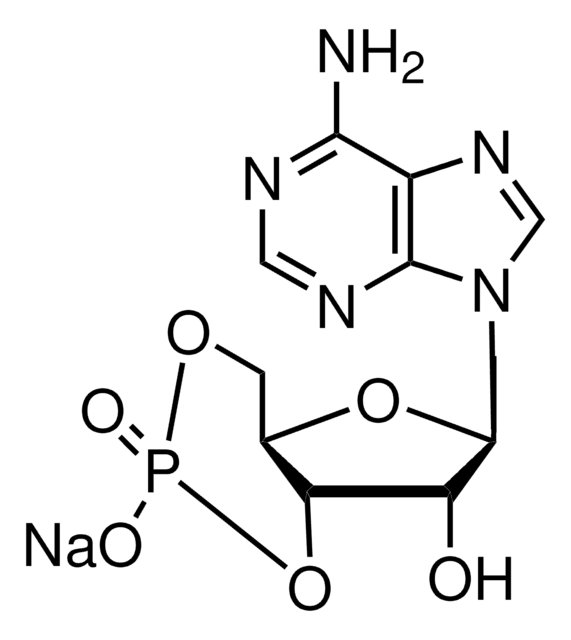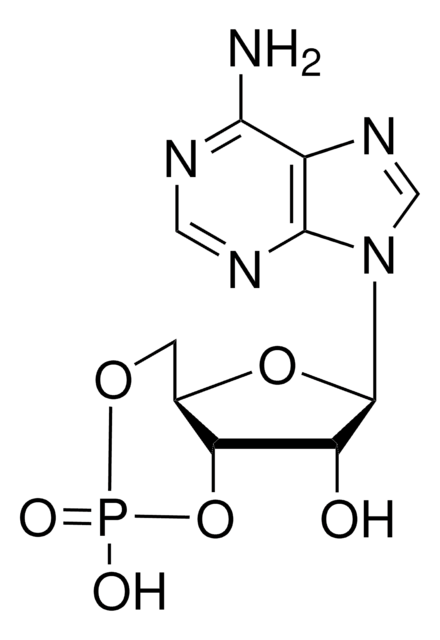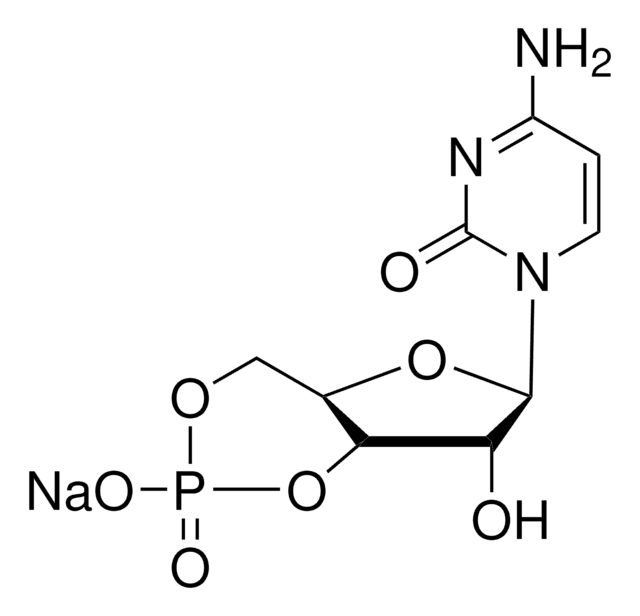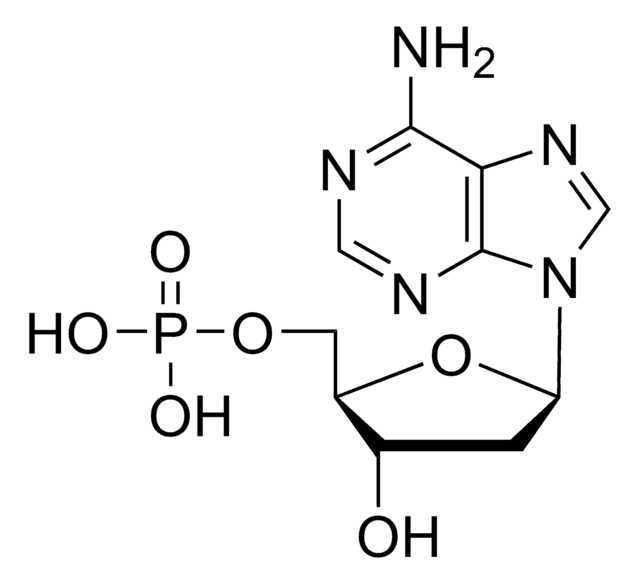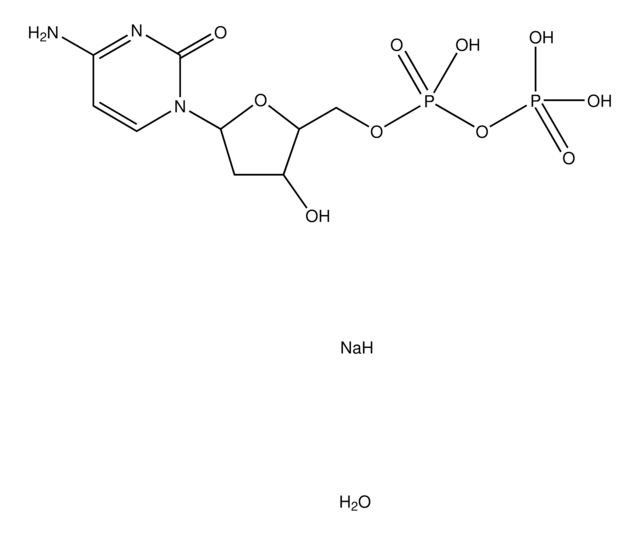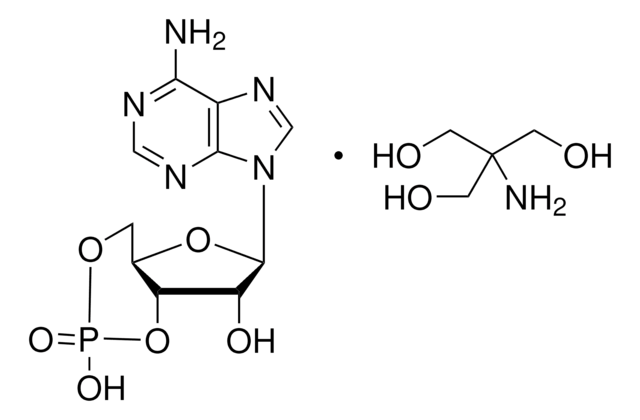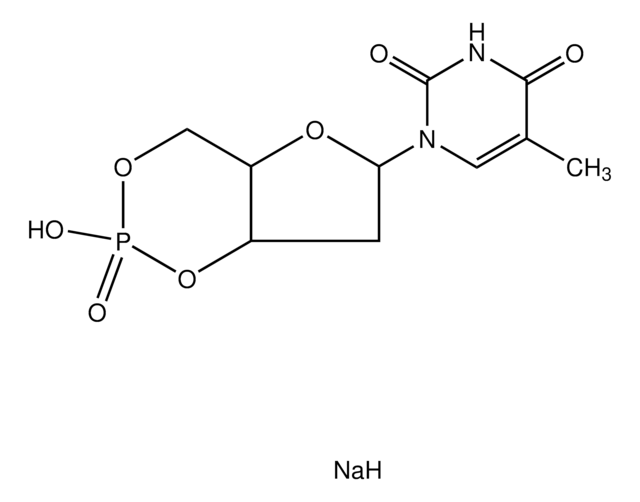Key Documents
G7504
Guanosine 3′,5′-cyclic monophosphate
≥98% (HPLC), powder, intracellular mediator
Synonim(y):
cGMP, cyclic GMP
About This Item
Polecane produkty
product name
Guanosine 3′,5′-cyclic monophosphate, ≥98% (HPLC), powder
Próba
≥98% (HPLC)
Postać
powder
kolor
white
rozpuszczalność
0.2 M NaHCO3: 50 mg/mL
temp. przechowywania
−20°C
ciąg SMILES
NC1=NC(=O)c2ncn(C3OC4COP(O)(=O)OC4C3O)c2N1
InChI
1S/C10H12N5O7P/c11-10-13-7-4(8(17)14-10)12-2-15(7)9-5(16)6-3(21-9)1-20-23(18,19)22-6/h2-3,5-6,9,16H,1H2,(H,18,19)(H3,11,13,14,17)
Klucz InChI
ZOOGRGPOEVQQDX-UHFFFAOYSA-N
Działania biochem./fizjol.
Cechy i korzyści
Hasło ostrzegawcze
Warning
Zwroty wskazujące rodzaj zagrożenia
Zwroty wskazujące środki ostrożności
Klasyfikacja zagrożeń
Eye Irrit. 2 - Skin Irrit. 2 - STOT SE 3
Organy docelowe
Respiratory system
Kod klasy składowania
11 - Combustible Solids
Klasa zagrożenia wodnego (WGK)
WGK 3
Środki ochrony indywidualnej
dust mask type N95 (US), Eyeshields, Gloves
Certyfikaty analizy (CoA)
Poszukaj Certyfikaty analizy (CoA), wpisując numer partii/serii produktów. Numery serii i partii można znaleźć na etykiecie produktu po słowach „seria” lub „partia”.
Masz już ten produkt?
Dokumenty związane z niedawno zakupionymi produktami zostały zamieszczone w Bibliotece dokumentów.
Klienci oglądali również te produkty
Nasz zespół naukowców ma doświadczenie we wszystkich obszarach badań, w tym w naukach przyrodniczych, materiałoznawstwie, syntezie chemicznej, chromatografii, analityce i wielu innych dziedzinach.
Skontaktuj się z zespołem ds. pomocy technicznej
